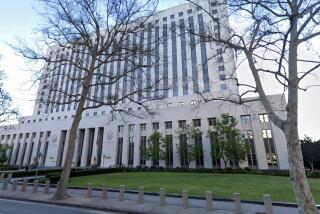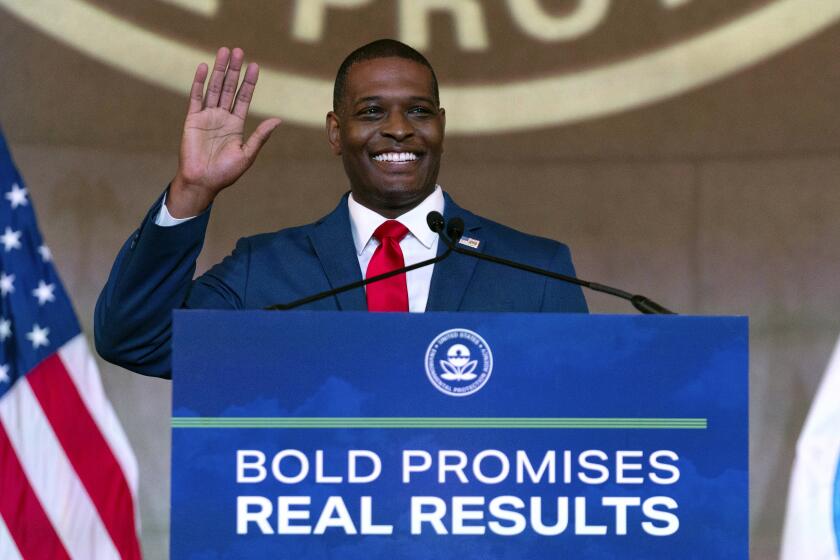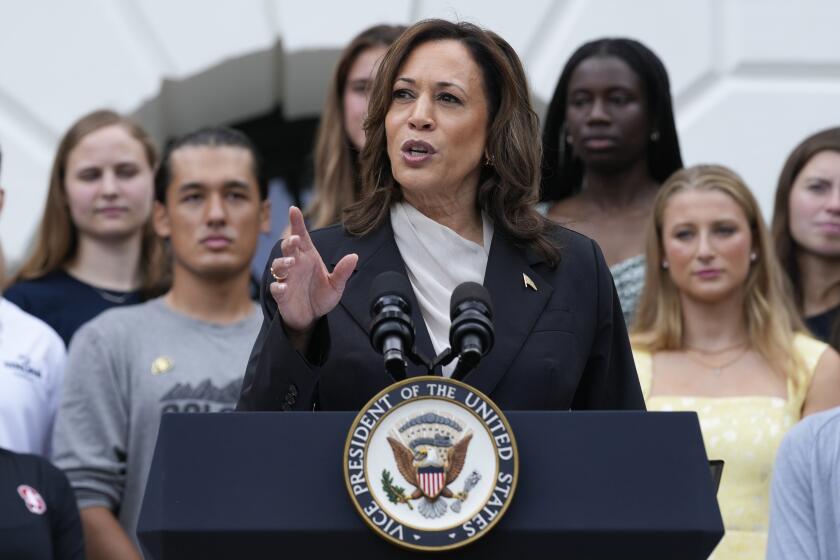Why Do Inquiries Take So Long?
Despite the outrage of many African Americans and despite the candlelight vigils, intense meetings, demonstrations and press conferences by community activists, it still took one year for Los Angeles Police Department Chief Bernard C. Parks to release his report on the slaying of Joe Joshua.
Joshua was an elderly African American man shot by LAPD officers in October 1998. To almost no one’s surprise, the LAPD cleared itself of any wrongdoing in Joshua’s death.
Beyond disputing whether the police killing of Joshua was justified, there are other troubling questions about Parks’ report. One is, why did it take so long to release it? It seems to be routine policy for police officials to hold reports in questionable shootings almost forever.
Police officials insist that this is necessary to track down witnesses, conduct interviews, collect statements, run tests, review and analyze the material collected and assess whether the shooting violates department guidelines on the use of excessive force.
However, many charge that police officials deliberately stretch out the time it takes to release reports in controversial shootings. They claim the police play for time in the hope that passions and anger within the community will die down and that people will forget the shooting.
Almost certainly, there’s some truth to these charges. Certainly, it is not a coincidence that by the time the LAPD released its findings in the Joshua case, it caused absolutely no stir within the black community. Simply too much time had passed.
A similar case is still pending--that of Margaret Laverne Mitchell. It has been five months since the 55-year-old homeless woman was gunned down by an LAPD officer. Despite demonstrations, marches, community meetings, protest rallies, memorials and Justice Department investigations, Parks has given absolutely no indication when the report on the Mitchell slaying will be released and what action, if any, will be taken against the officers involved.
The Mitchell killing raises even more disturbing questions than the Joshua shooting about police policies and procedures. Two bike patrol officers claimed that they stopped Mitchell to question her about a stolen shopping cart. According to their account, she lunged at them with a screwdriver, and one of the officers lost his balance. His gun discharged. While several eyewitnesses confirmed the police version of the shooting, at least two eyewitnesses didn’t. They insisted that officers shot Mitchell as she walked away from them. They said that at no point did they see Mitchell threaten the officers with the screwdriver.
Even if Mitchell did hold a screwdriver, she was a frail, middle-aged woman. Did she truly represent a life-endangering threat to the police? She was not a suspect in a murder, armed robbery or gang shootout, but in a case involving an allegedly pilfered shopping cart. Couldn’t they have subdued her with pepper spray, a baton, a Taser gun, rubber bullets or some other device in their arsenal of non-lethal weapons?
The Mitchell slaying once more brings into question police training, guidelines and procedures on the use of deadly force. This shoot-first, ask-questions-later policy has gotten the LAPD into hot water time and again over the years.
After the Rodney King beating and the L.A. riots, this policy earned the LAPD the dubious honor of being branded the nation’s poster police agency for police abuse. Last year, the U.S. Civil Rights Commission, in a blistering report on police practices in Los Angeles, hinted that the LAPD has not cleaned up its act. It called for the appointment of an independent prosecutor to investigate police abuse in the city.
The Congressional Black Caucus and Amnesty International also held recent hearings in Los Angeles on police abuse. They heard from a parade of local officials, attorneys, Justice Department officials, victims of alleged police abuse and relatives and friends of persons killed by the police. The sordid accusations by a rogue LAPD Rampart Division cop, Rafael A. Perez, that some LAPD officers shoot, beat, plant evidence and give perjured testimony against suspects have done nothing to enhance the department’s image and credibility.
The huge gap in time it takes for police to release reports on questionable shootings, the way police officials shroud how they investigate themselves and the lack of stringent accountability by the Police Commission and the LAPD’S inspector general are major barriers to completing the Christopher Commission reforms. Worse, these shortcomings do little to ease public suspicion that the police are loath to prosecute officers who use excessive force against citizens, no matter what the circumstances.
More to Read
Sign up for Essential California
The most important California stories and recommendations in your inbox every morning.
You may occasionally receive promotional content from the Los Angeles Times.






